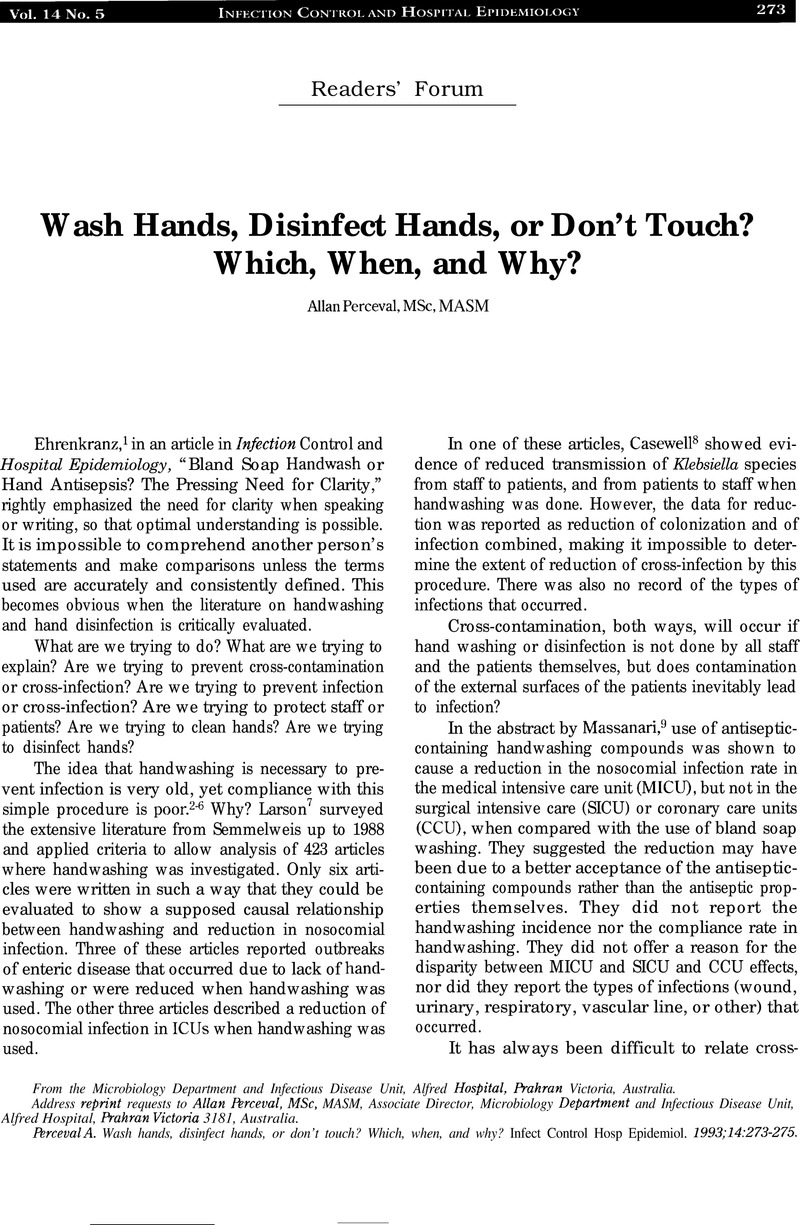Crossref Citations
This article has been cited by the following publications. This list is generated based on data provided by Crossref.
Voss, Andreas
and
Widmer, Andreas F.
1997.
No Time for Handwashing!? Handwashing versus Alcoholic Rub: Can We Afford 100% Compliance?.
Infection Control and Hospital Epidemiology,
Vol. 18,
Issue. 3,
p.
205.
Thompson, Betsy L.
Dwyer, Diane M.
Ussery, Xilla T.
Denman, Susan
Vacek, Pam
and
Schwartz, Benjamin
1997.
Handwashing and Glove Use in a Long-Term–Care Facility.
Infection Control & Hospital Epidemiology,
Vol. 18,
Issue. 2,
p.
97.
Larson, E.
1999.
Skin Hygiene and Infection Prevention: More of the Same or Different Approaches?.
Clinical Infectious Diseases,
Vol. 29,
Issue. 5,
p.
1287.



